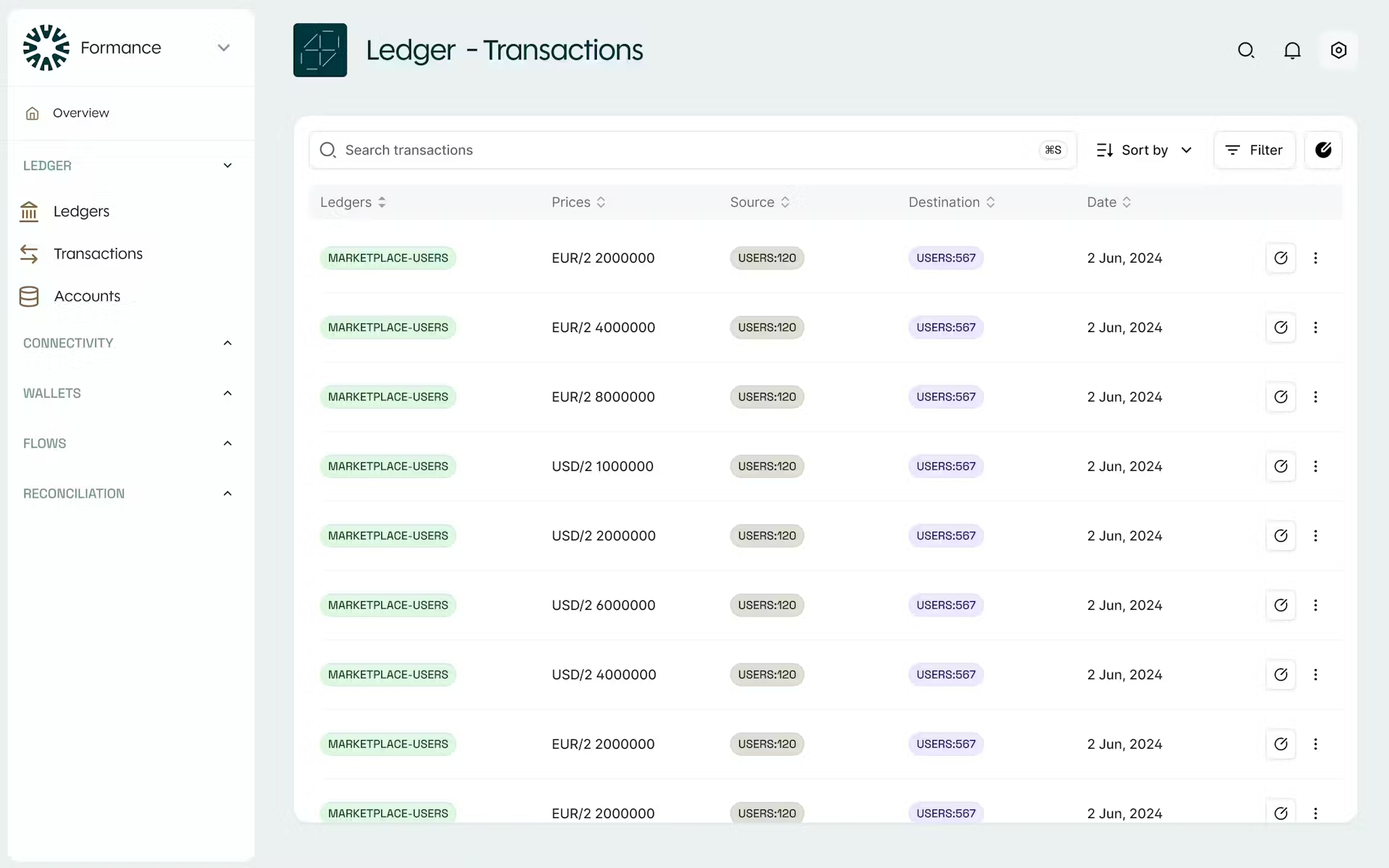Open Source
Financial Core
Build bespoke flows of funds using the partners of your choice on the Formance agnostic infrastructure

Trusted by leading companies to build and operate their financial backend
Is your product limited by a legacy financial infrastructure?
Product & Payments
Feeling limited by your current financial stack?
Are you facing rigidity in your current stack and providers that prevent building custom flow of funds and features? What if you were provided a toolkit that empowers you to develop limitless use cases tailored to your specific business context?
Engineering
Struggling with siloed & legacy in-house system?
In-house development and custom integrations of additional financial partners are highly time and resource-consuming. Picture a world featuring a unified data layer and an agnostic financial infrastructure, enabling you to effortlessly scale, free from performance hurdles.
Revenue
Missing strategic product opportunities?
You may be leaving money on the table due to underused financial products and an inefficient infrastructure. Unlock additional revenue streams and improve unit economics through new financial features, supported by the partners of your choice.
Modular, Extensible
Financial Backend
Start owning your financial business logic by using
Formance agnostic infrastructure and connect with the
financial partners of your choice.

Ownership & control
With Open Source core components and
multiple hosting options available.100% agnostic
Abstraction layer that can be plugged
with any type of financial providers.Fully programmable
For engineering and payments teams. No limitation tied to your vendor’s roadmap.
Modular & Agnostic Primitives
The Formance Platform is a suite of financial primitives built on a unified data layer,
encapsulating the intelligence and business logic of financial transactions in one place.
Record your money flows
in database
Record real-time money movements on a programmable financial ledger built for scalable asset tracking.
Unlimited sub-ledgers
Scale horizontally with unlimited sub-ledgers. Choose your sharding strategy from one unique ledger to a ledger per user.
Ledger as a Foundation
The ledger is a low-level accounting tool, on which a lot of other services can be built. Wallets services, Reconciliation services and counting.

Extensive Connectivity
Connect your Formance Platform to the financial provider or payment processor of your choice.
Use one of the connectors available or create your own

Enterprise-Grade Security
Your core financial infrastructure requires security.
We make sure to keep your infrastructure safe & reliable.
SOC 2 Type II Certified
We obtained SOC 2 Type II certification and we are constantly working on our compliance.
ISO 27001 Certified
We are certified by Johanson group, affirming our commitment to the highest standards of security.
Cloud or Self-Hosted
Use our Cloud or host your financial backend
using the hosting provider of your choice.Open Source
Source code with lifetime access, offering transparency along with a community support.
Standard Authentication Protocols
Enhanced security and integration with seamless authentication with OAuth, JWT, OIDC.
Penetration Testing
Third-party security firms undertake regular penetration tests on every product we build.